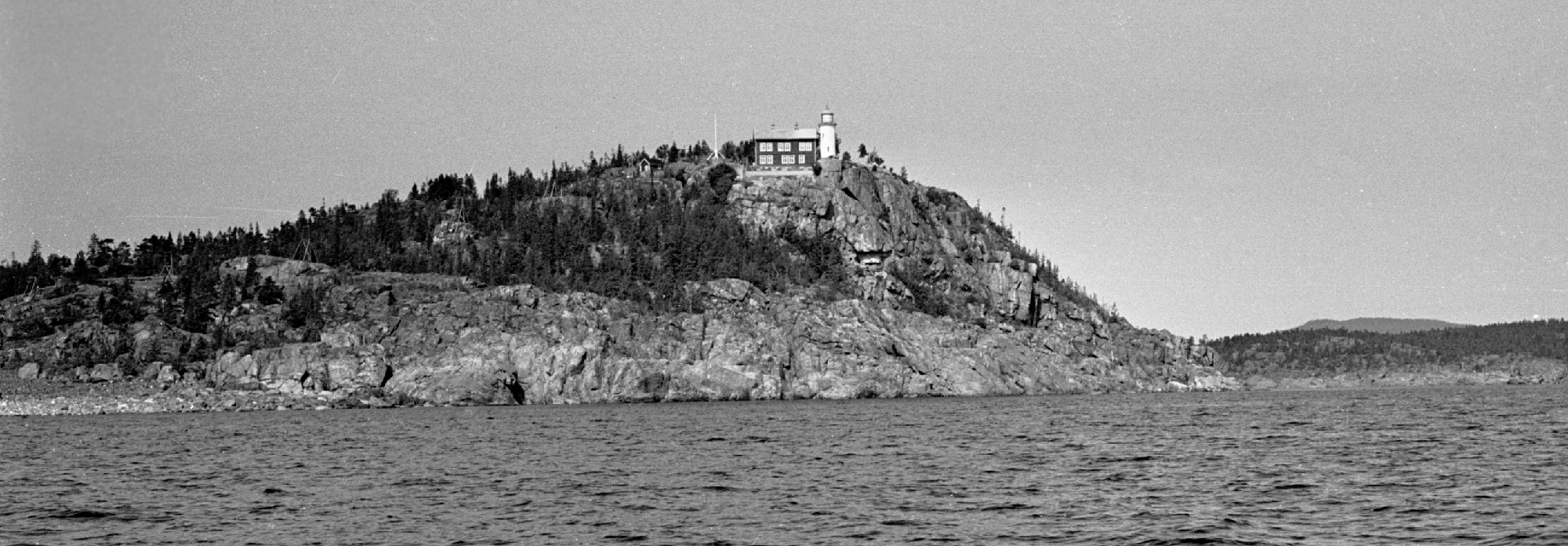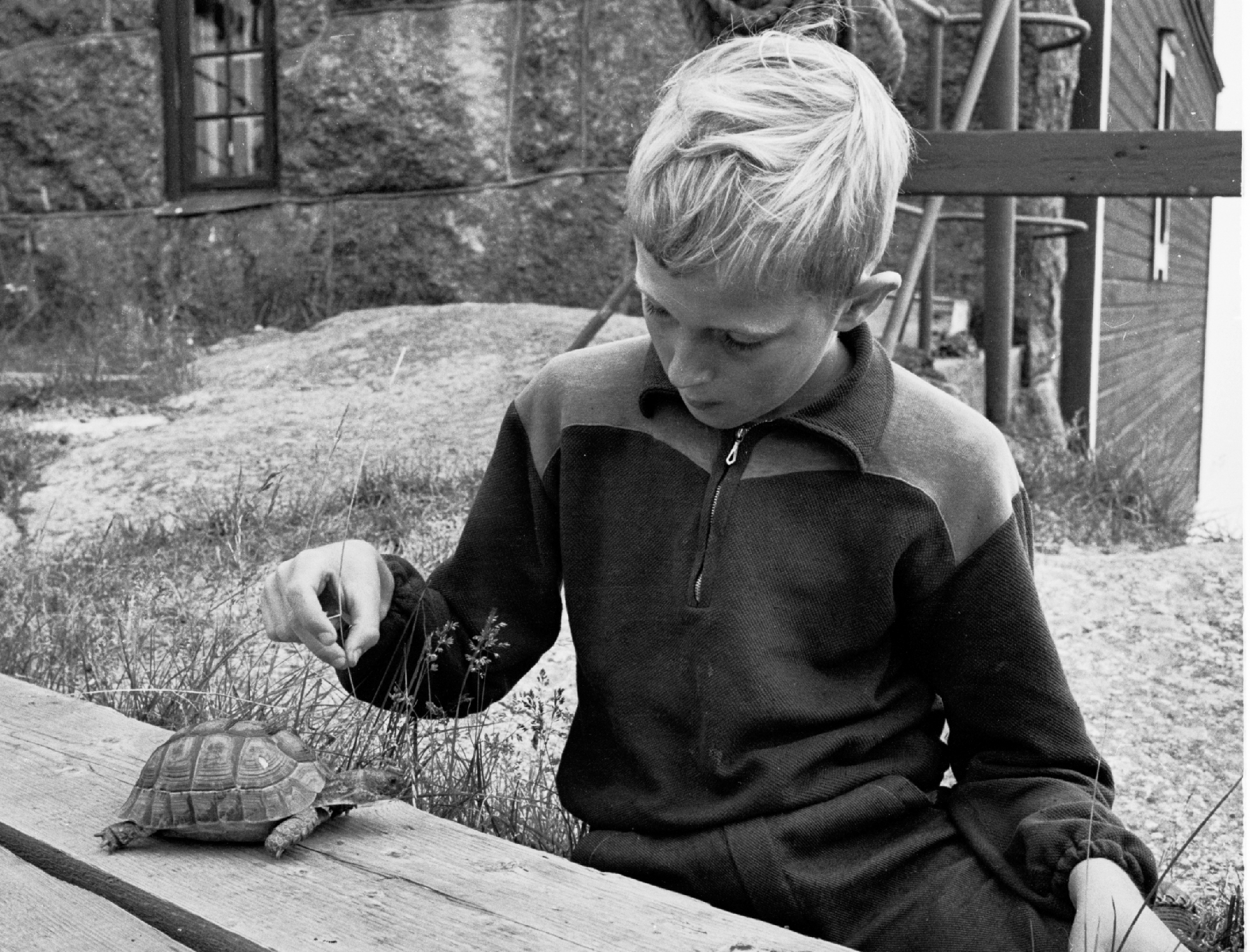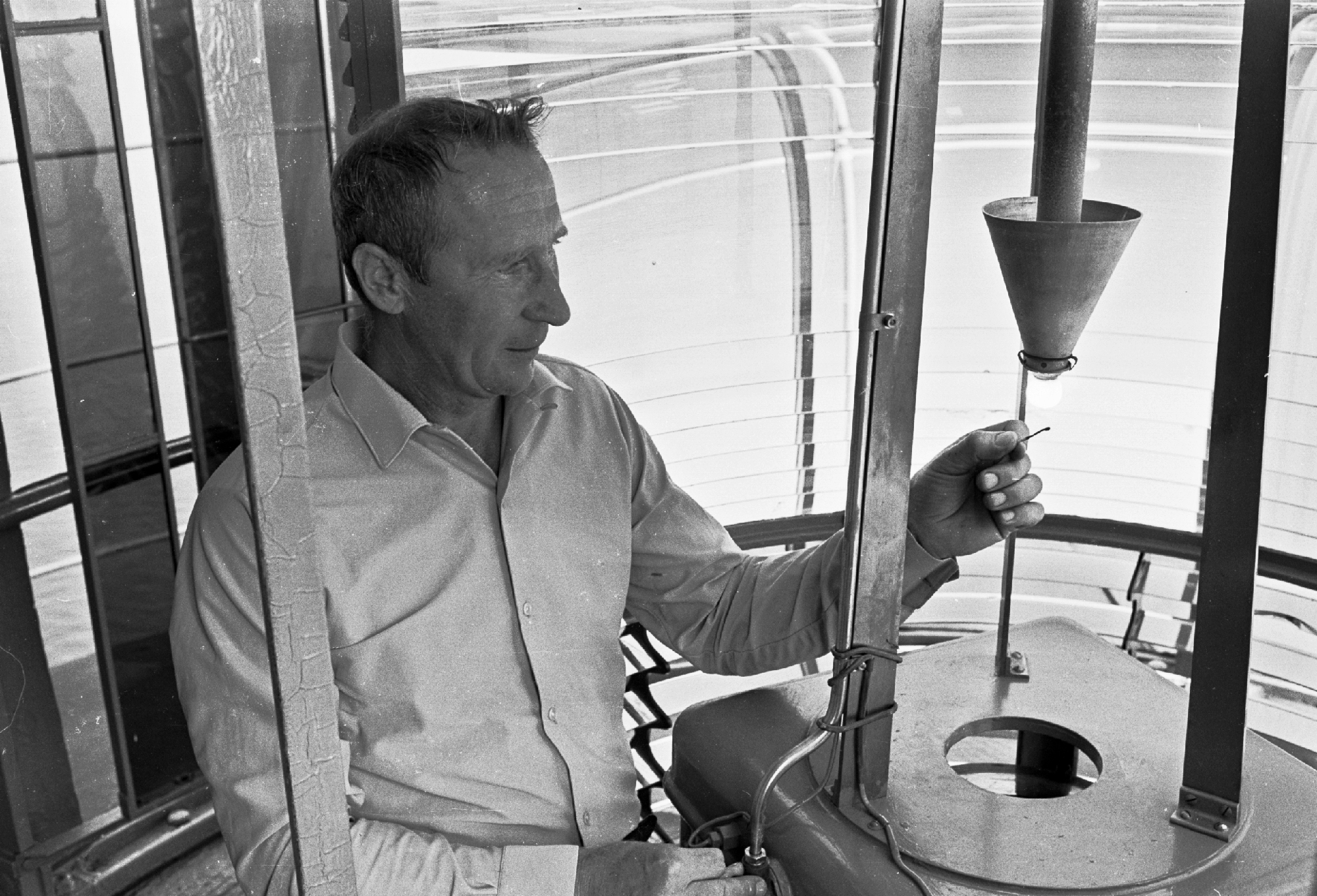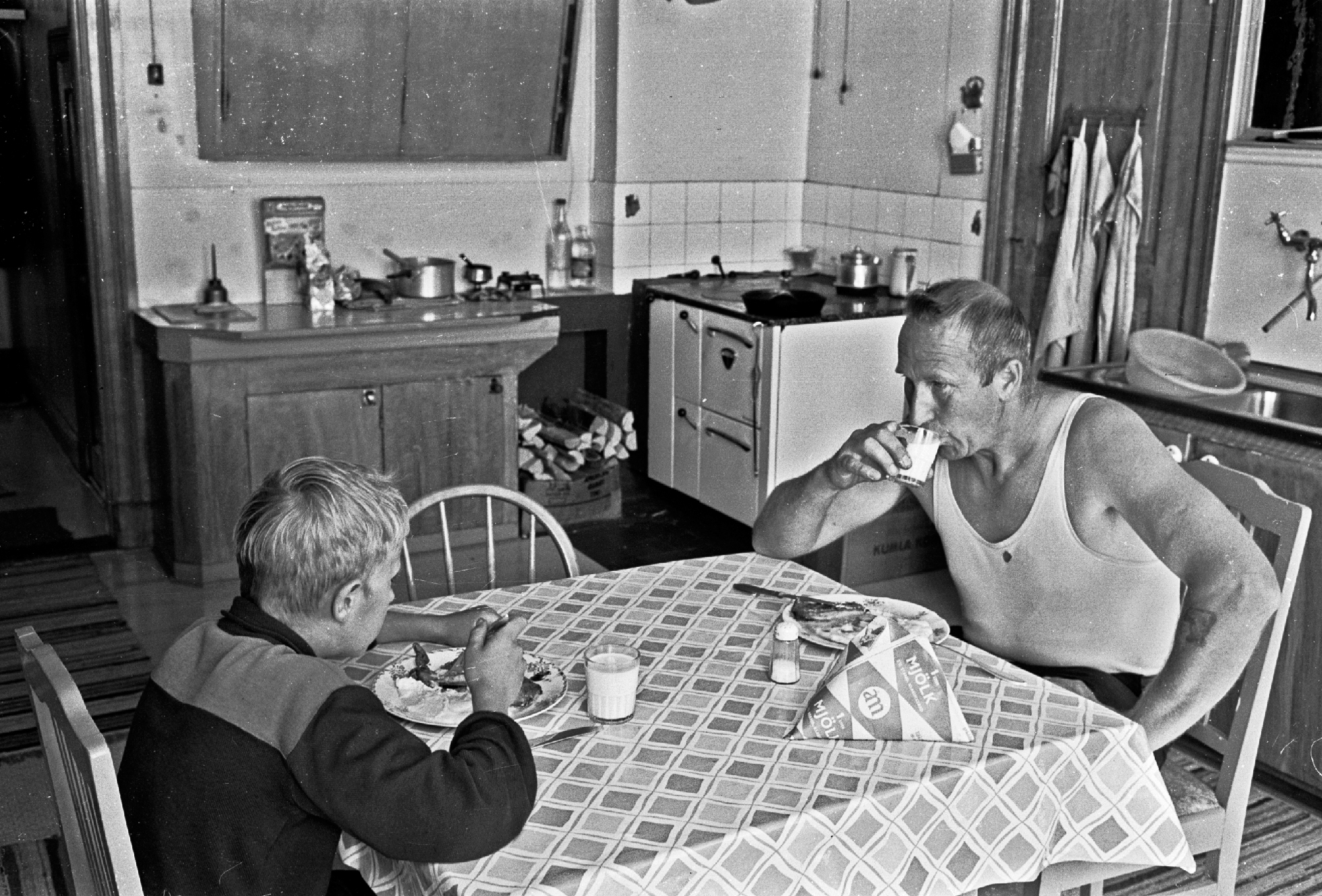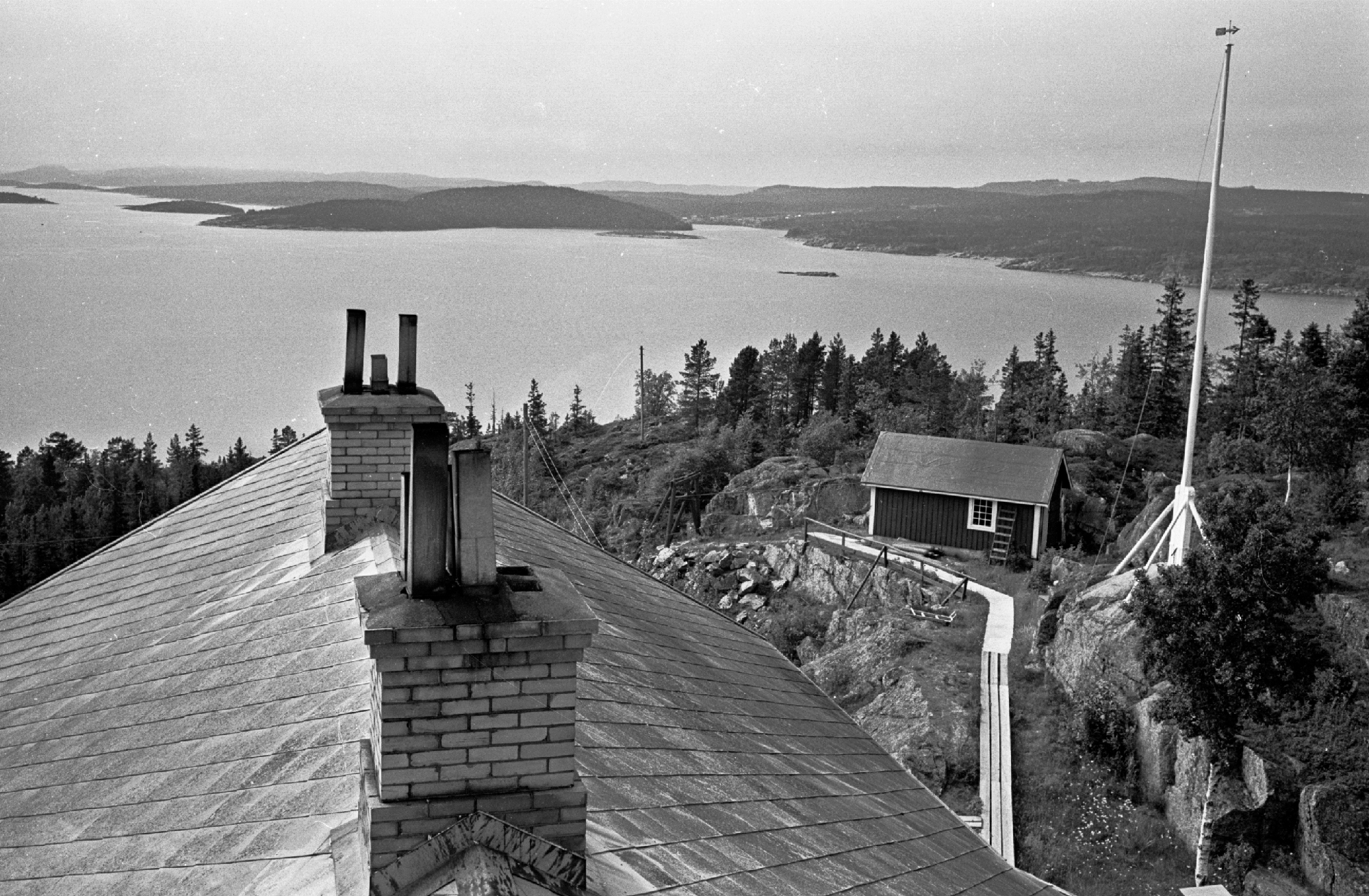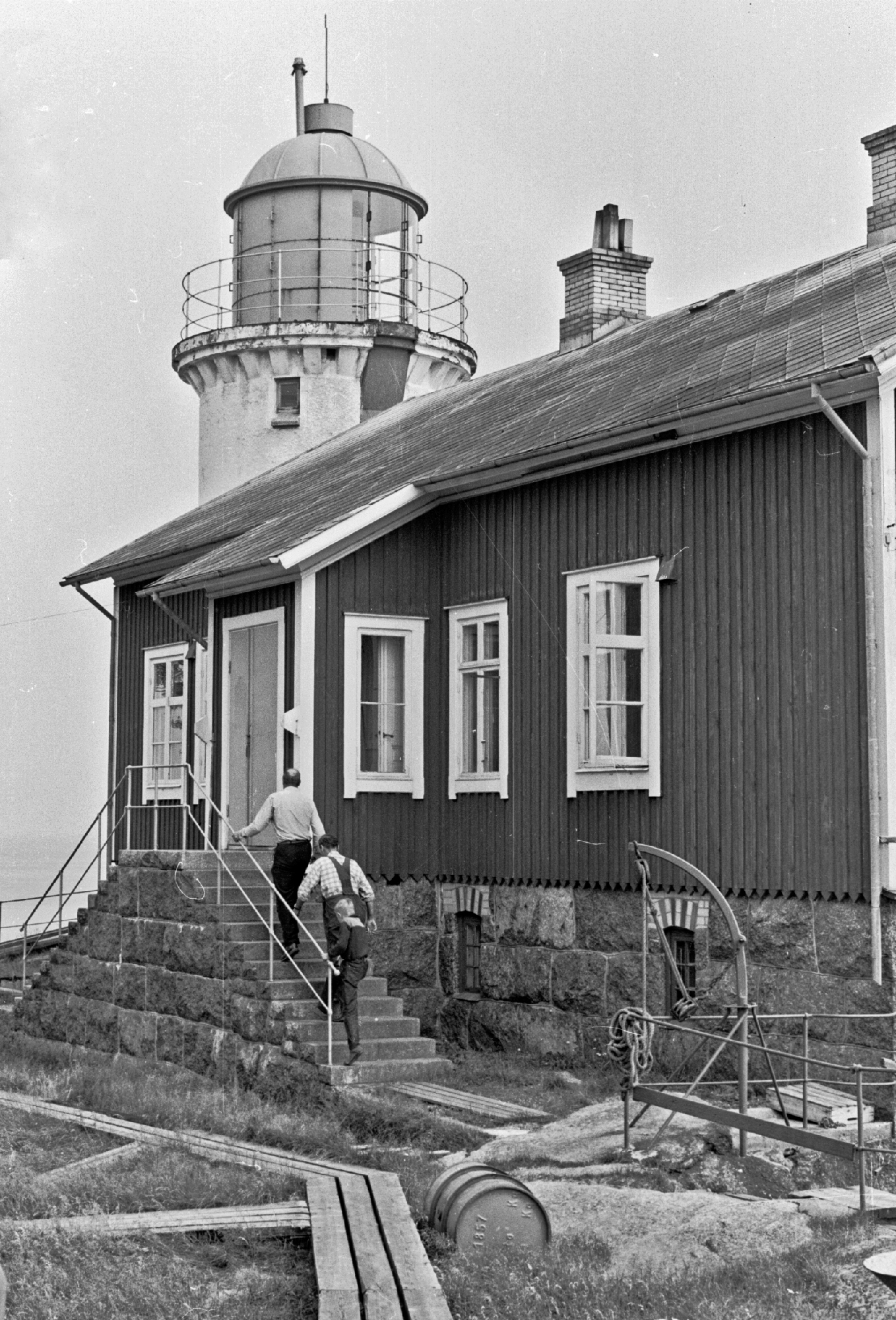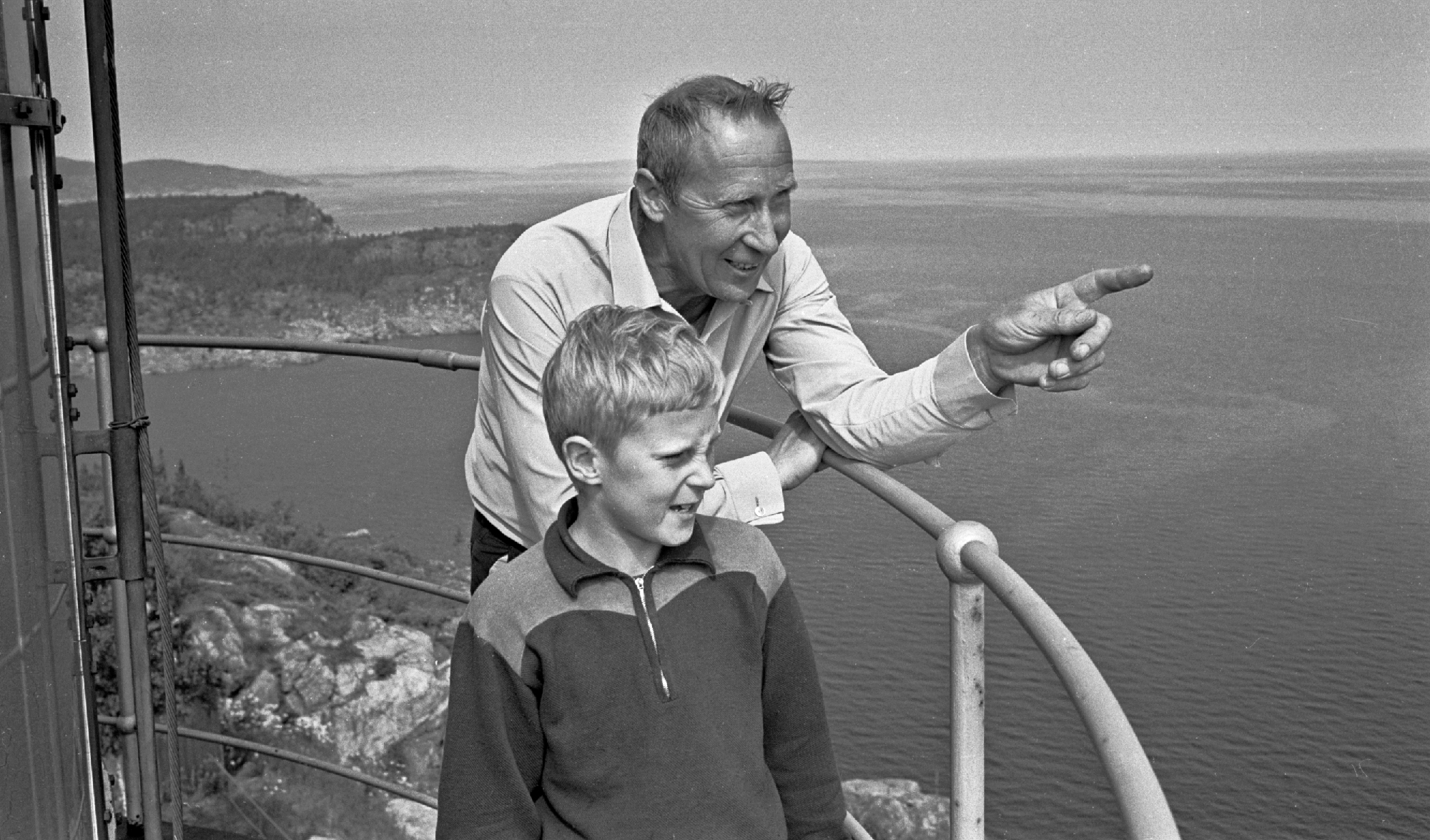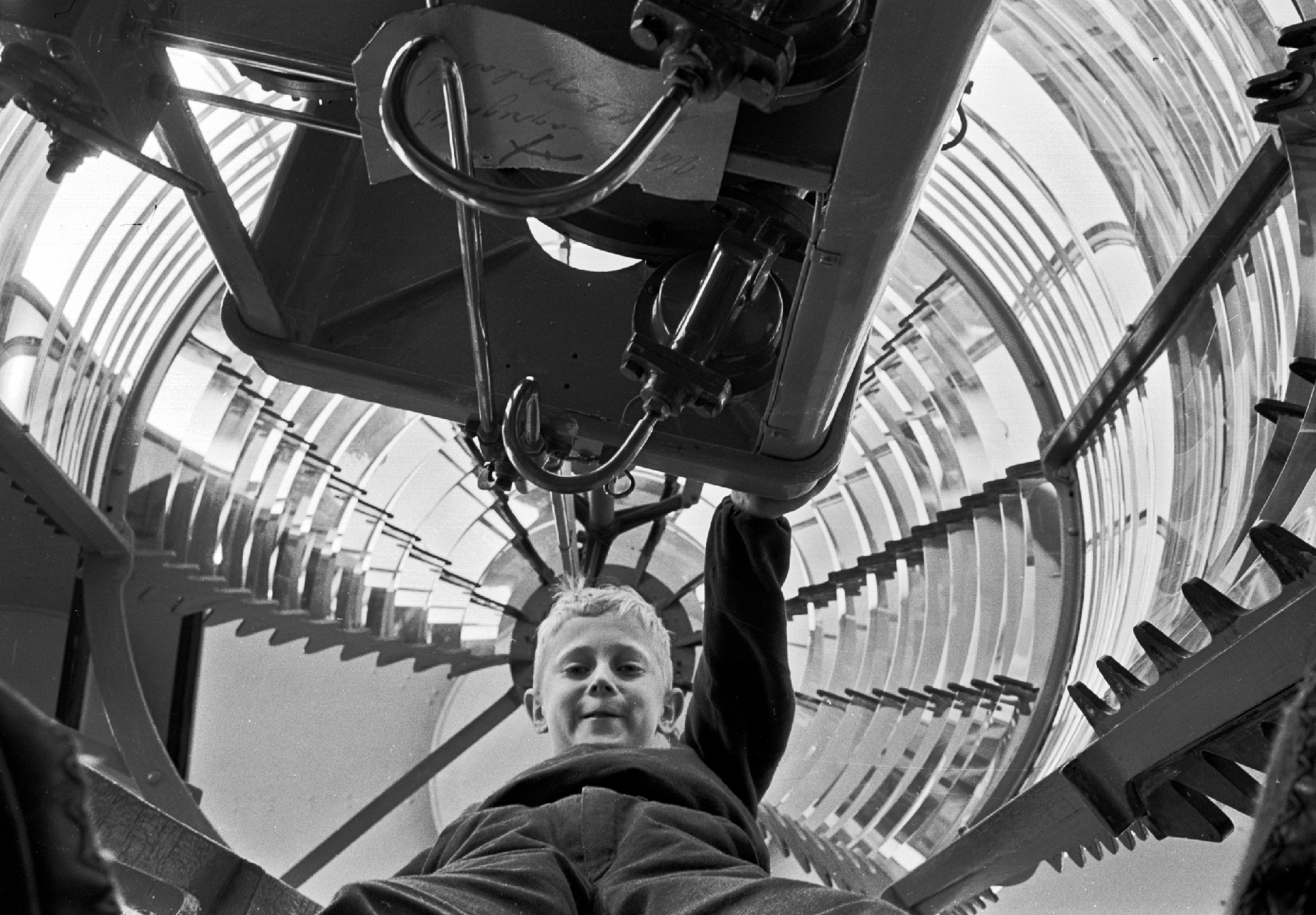Text: Berit Norstedt
Photo: Staffan Norstedt
First published in Örnsköldsviks Allehanda on July 30, 1963
Thrown out into the sea off the Nordingrå coast in the UNESCO High Coast World Heritage lies the island of Högbonden, mountainous and inaccessible. Towards the north, it plunges almost vertically 67 meters into the water, and there is no harbor. The lighthouse keeper pulls up her stern spinner with winch in a sloop.
The lighthouse is located on a plateau at the top of the island and is one of Sweden's highest. In the red two-story long house, which is adjacent to the lighthouse tower, only the lighthouse keeper and his assistant live - and during the summer the lighthouse keeper's son. The path from the beach up there goes over rock outcroppings and steep steps. It is uncomfortable to walk, mostly in slips and snow, but an old motorized cable car facilitates larger transports.
Lighthouse Keeper Rune Unger has lived at Högbonden for six years. Before that he was at Pater Noster in Bohuslän. Now he has to start looking around for a new job and will probably end up on the upland coast.
He loves the lighthouse. - You are welcome to come out here sometimes and see how we are, he says, but we don't want to live with you. And he and the helper, Verner Sjölander, laugh heartily when they imagine what it's like to work e.g. in a factory. The thought is so foreign. They enjoy the solitude of the island and being able to manage their day freely.
The family lives in Skåne
The lighthouse keeper is from Skåne and has a villa and family in Mölle. The wife and youngest son lived with him the first winter up here but then moved back to Skåne. Now he saves days off and holidays and travels home a few times a year. During the summer, 10-year-old Lars lives with his father.
Verner Sjölander is not part of the actual lighthouse staff, but usually substitutes when someone has time off. A regular man quit recently but no new one is being hired for the short time until Christmas. Sjölander has promised to stay. He is also married. The family lives in Bönhamn, and he prefers to spend the weekends there.
Life on the island has its sides. The weather can change from one moment to another. Quickly it blows up into a storm, or the fog comes rolling in from the sea. After a lovely morning, you may have to cancel the visit to the trade stall at 10 o'clock due to bad weather. Under such conditions, it is difficult to calculate and plan anything.
Isolation 23 days
Also in winter, when shipping has ceased, the lighthouse must be manned. Weather and ice reports must be submitted daily. Right then, you can still generally get ashore. Worse is autumn and spring, when the ice neither wears nor breaks. Firefighter Unger was isolated for 23 days last spring. - I tinkered with the household and submitted reports and took a nap when I felt like it, he says. It went well.
But of course you have to make sure that there is something to live on, and that is not difficult when you are only one person. I stock up on salt fish and pork, preserves, potatoes and dry milk and then yeast and flour so I can bake a little bread.
Kindergarten in the attic
Nowadays, the women have long since left Högbonden, but in the past, real family life was lived there. There were three apartments in the house, still do, and in each lived a family. 21 people when it was the most. Then it was also the case that the children at the Swedish lighthouses got their first school contact at home, and a primary school teacher resided here in a room in the attic. It was not easy to keep up with the isolation and the close friction. It is said that in winter, three journeymen crossed the ice to Bönhamn, one for each family. So that they wouldn't risk meeting each other! The absence of women at today's lighthouses places special demands on the men, but for lighthouse keeper Unger, household work does not face any difficulties. He has been a chef both at sea and in restaurants ashore. In autumn it happens that he goes ashore and picks blueberries, lingonberries and mushrooms for the winter's supply, and every now and then a small fish comes into the nets.
He cleans when he feels like it and thinks it's necessary and wet wipes everywhere, like at sea, instead of dusting. Electricity and central heating are missing. You get by with stoves, wood stoves and kerosene lamps. But there is running water – from a 130 meter deep well – and a fridge. Those who want to wash their clothes in a laundry room in the basement instead of sending them away.
Wind report without meter
The lighthouse itself at Högbonden requires minimal maintenance even before it becomes electric. The gas flame should be lit once, right now at half past ten in the evening and extinguished once, now around half past three. In between, it flashes by itself with seven seconds of light, three seconds of darkness and is visible far and wide.
Temperature, wind strength and cloudiness are reported twice a day. But the thermometer is the only instrument! The anemometers are so unreliable, especially if they are in a vulnerable position at a height of 65 meters, and sailors and lighthouse keepers can easily judge the wind just by looking at the water, says lighthouse keeper Unger.
Transportation by cable car
In the past, the maintenance of the lighthouse buildings has also occupied the people of Högbonden, but now most of it feels pointless, when soon no one will live there. Bringing up bulky and heavy things such as firewood, fuel and building materials would not have been possible without the winch track.
It runs up the slope from the beach and ends in a small shed with an old spark plug engine, which has been there since the beginning. With that engine, among other things, stone and everything else that was needed when the house was built was pulled up, and recently the last gas tubes were taken up before the lighthouse's electrification. But soon the track will also be electric. The irony of fate: it would have been needed long before, while there were people at the lighthouse.
Networking against boredom
Has it been boring at Högbonden? No, the men reply. The local newspaper is the first to move, although it comes irregularly. Transistor radio and network connection too. Books? Well, when you've experienced as much as we have... says fire master Unger. But otherwise there is a hiking library in Bönhamn.
By the way, tourists come from time to time now in the summer, as well as acquaintances from the fishing village. Twice a week, if possible, the four people go into the trading booth and shop and pick up their mail. And there are birds and other animals on the island, and big and small boats pass by on the sea.
No, it's not boring. Often awkward but otherwise lovely and free. Most beautiful when the foam sprays and the ice is broken against the slabs by the pre-winter storms.

